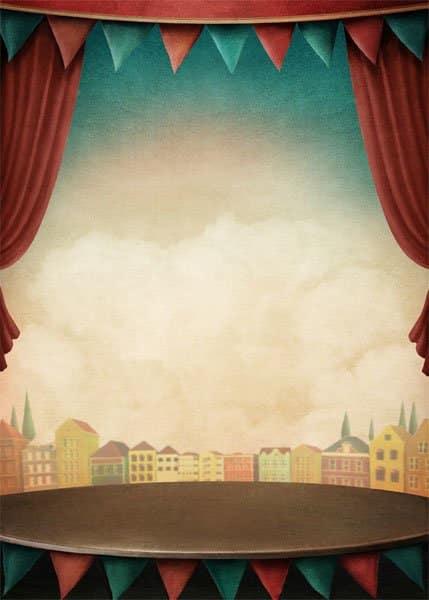Backdrops are instrumental to theatre sets. Whether used to change the setting in a play or create a certain type of atmosphere in a musical, the importance of a convincing and high-quality backdrop can’t be underestimated.
Although many organisations choose to buy a printed backdrop, many people prefer to buy a plain backdrop and paint it themselves. However, it can be difficult to know where to start with this venture, especially if you need large pieces of fabric. This article will outline the key things you need to consider when learning how to paint backdrops successfully.
- Choose the correct fabric
Lightweight materials, such as muslin, are ideal for hanging, storing and transporting. Knitted polyester fabrics are more durable and can be easily painted, although you might require veil or blockout fabric for your production needs
- Prepare the floor
Place the fabric over drywall sheets or wooden boards laid under plastic sheets to catch any paint that may drip through the cracks. Either staple, tape or anchor the edges of the fabric securely onto the boards to prevent movement while you paint. The flatter the surface, the better.
- Sketch your backdrop
Use a pencil and sketch your entire design on the backdrop prior to painting. A useful tip is to find your horizon line and begin from there, using photographs and sketches as guides. This might take a few attempts, but better to get it wrong in pencil than in paint.
- Begin painting
To paint long-distance scenery such as the horizon, sky or mountains, use wider and flatter brushes and keep the colours lighter. Darker colours demand more attention from an audience so keep these colours to add depth and dimension.
Use the edge of a brush and sponges for more precise landscaping, such as trees and clouds. Latex paints and rollers make a great base coat for wide landscapes as they’ll allow you to cover the fabric quickly and efficiently. For delicate outlines, consider cutting out the shape into a stencil to improve line accuracy, which you can fill in with tiny brushes for detail at a later stage. Ensure that the backdrop is completely dry before hanging.

How to hang a Backdrop on stage
How to hang a backdrop all depends on the type of fabric and if any hanging mechanisms have already been implemented. For instance, some banners have pole pockets which let poles slide easily and securely into the backdrop.
Typically, stage backdrops will already have a stitched seam and a row of eyelets or grommets sewn across the top for hanging. If your backdrop does not, you can purchase eyelets and sew them into the fabric manually, although this will take time. For those with pre-installed hanging devices, the process is simple:
- Lay the backdrop on a clean floor in front of the hanging structure with the painted or front-facing exterior facing upwards.
- Pick up the backdrop from the centre of the fabric (use several people for this depending on size). Pick it up using rubber tip clamps or ties.
- For multiple eyelets sewn across the top of the backdrop, use rope or zip ties to attach it to the outer frame and structure working from the middle outwards. Make sure that it’s fully stretched so that it can be evenly hung.
- Leave the backdrop in this state for a full day to allow the wrinkles to be drawn out.
- If there is a pipe pocket along the bottom, insert a pipe into the sleeve to weigh down the backdrop and prevent creases
How to make a stage backdrop curtain
To make your backdrop into a sufficient stage curtain, you need to invest in a fabric that can be printed, painted or plain. Cotton, polyester and mohair backdrops work particularly well for curtains. Make the curtain by following the same steps you would to make a fabric backdrop. Large eyelets and grommets can be installed to fit over a pipe structure for traditional curtains. Although, there are certain curtain motion systems such as curtain tracks and motors for hanging to ensure seamless unveiling.











Leave a Reply
You must be logged in to post a comment.